Inside Trattoria del Ciumbia — The Milanese Restaurant That Offers a Masterclass in Creating Spaces Where “Different Eras Coexist” and “Textures Clash Harmoniously”
The designers at Dimorestudio took the brief of creating an eatery "that felt both familiar and unexpected" to the next level with the sentimental Trattoria del Ciumbia, where atmosphere, emotion, and rhythm coexist
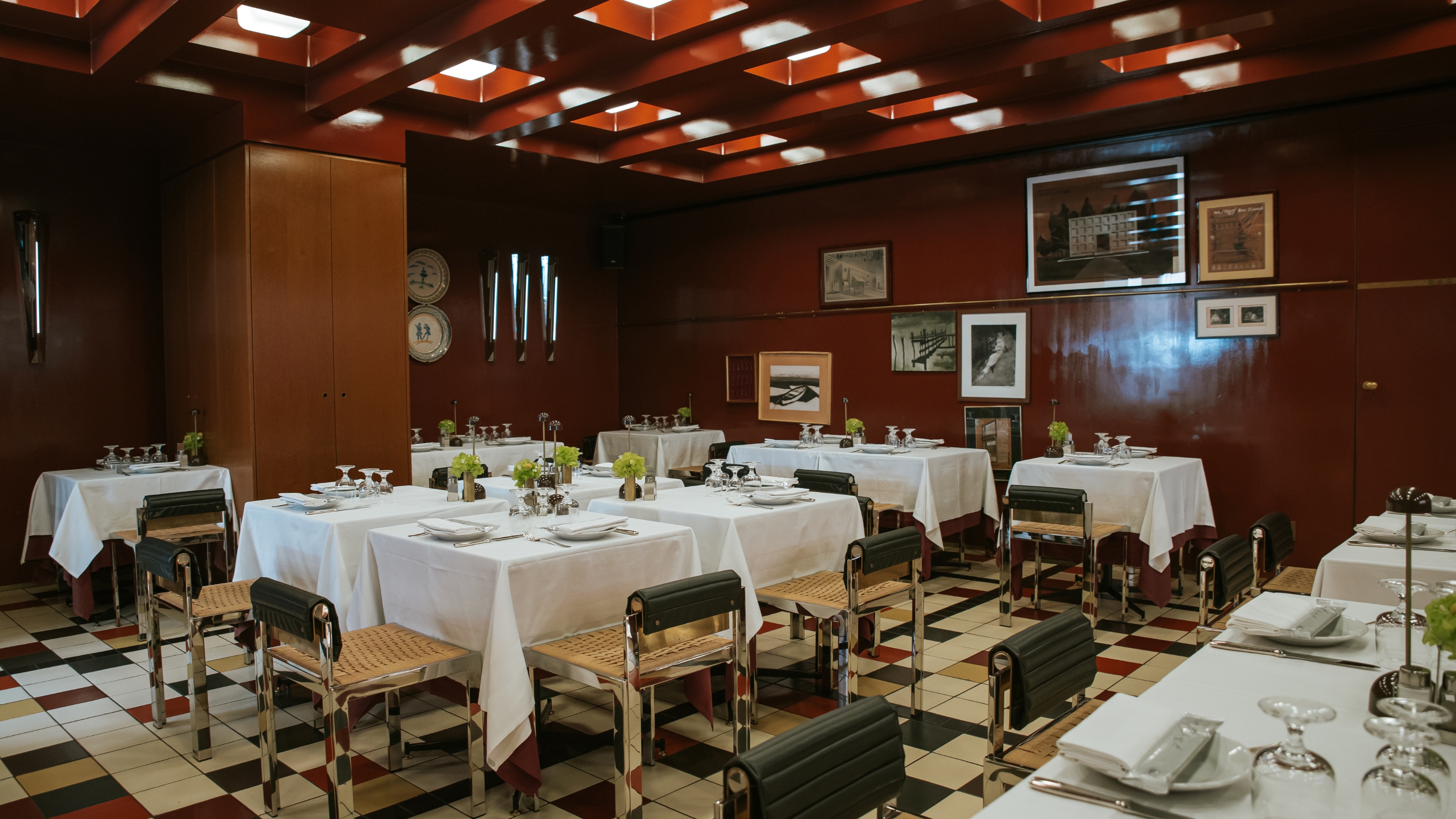

There are places that, as an Italian expat in London, instinctively awaken a sense of home, of warmth and comfort, inside of me; the feeling of returning somewhere we have not only been to before, but we have also been happy in, whether or not that actually happened. Opened in 2024 in Milan's artful district of Brera, and drenched in local interior design practice Dimorestudio's timelessly iconic, daring savoir faire, Trattoria del Ciumbia is one of them.
No, it isn't simply because Trattoria del Ciumbia is one of the restaurants in Milan that every real interiors lover will recommend to those wanting to get an authentic taste of the Italian design capital's culinary and style flair. Instead, it is largely thanks to the way in which its sensory dining room and hidden-away private club lounge downstairs are enough to transport anyone lucky enough to step inside of them to the most electrifying of Milan eras: the booming 1960s.
Part of the Triple Sea Food hospitality portfolio, this fairly recent addition to the northern Italian city's gastronomy scene is helmed by executive chef Paolo Rollini. Here, the goal is to give a fresh appeal to the plates that have made Milanese cuisine and the wider Lombard tradition renowned worldwide — think golden-hued, silky risotto alla milanese, earthy casoncelli with saffron cream, apple, and mushrooms, restoring bolliti, and a wide choice of melt-in-your-mouth, smoky meats.
Pair them with an expansive, Italian-led wine list, plenty of cocktails to pick from, including evergreen staples like Martinis, Negronis, and Bellinis, and the opportunity to book the lower ground's nightlife bolthole exclusively for you and your guests, and you've got a recipe for success. Arguably, though, it is the dynamic imprint left behind by Dimorestudio's co-founders, Britt Moran and Emiliano Salci, that, combined with the flavor explorations of its menu, transforms Trattoria del Ciumbia into something truly unique, worthwhile.
The Brief: "Meticulously Composed, Yet Imperfect and Lived-In"

"From the start, we wanted to avoid nostalgia as mere reproduction, instead, we sought to reconstruct atmosphere, emotion, and rhythm." — Dimorestudio
"We were immediately intrigued by the idea of creating a place that could reinterpret the soul of the Milanese trattoria, a typology of restaurant so rooted in the city's collective memory, yet rarely explored through a contemporary lens," the British-Italian duo, who are also behind the look of another one of the coolest eateries in Milan, the Asian-infused Langosteria Cucina, besides having imagined the coolest luxury train ride of 2025, the Dolce Vita Orient Express, tell me.
The brief was simple but ambitious: "to create a restaurant that felt both familiar and unexpected". Trattoria del Ciumbia doesn't conceal its slightly nostalgic undertones, with anything from the color scheme to the framed artwork present throughout, the textured ceiling, and checkered motifs absorbing visitors into a vintage film-like, Wes Anderson-esque scene.
Still, more than "a mere reproduction" of the past, Moran and Salci sought to reconstruct atmosphere, emotion, and rhythm. "What makes Trattoria del Ciumbia quintessentially Dimorestudio is the layering," they explain. Whether on the ground floor or down below, at the restaurant, "different eras coexist, textures clash harmoniously, and the space feels meticulously composed, yet imperfect and lived-in."
The Livingetc newsletters are your inside source for what’s shaping interiors now - and what’s next. Discover trend forecasts, smart style ideas, and curated shopping inspiration that brings design to life. Subscribe today and stay ahead of the curve.
Channeling Brera's Irreverent Spirit
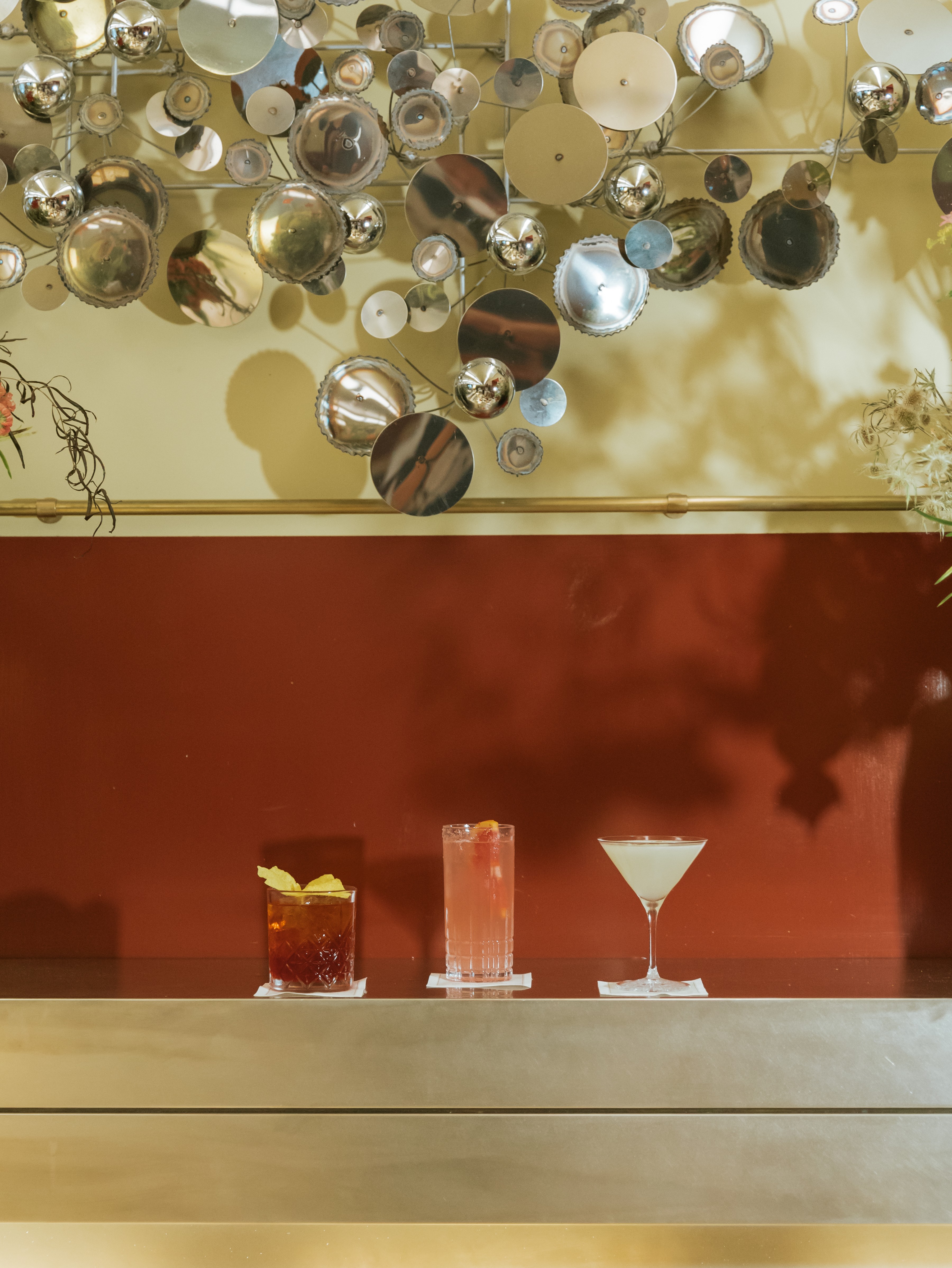
Trattoria del Ciumbia merges the best of Milanese heritage and fare with contemporary design flair.
From Gio Ponti and Achille Castiglioni to Ettore Sottsass and Gae Aulenti, Milan's mid-century modern architecture and design heritage is dotted with groundbreaking stars. As if that in itself wasn't enough of an inspiration for Moran and Salci, Trattoria del Ciumbia's prime location on Via Fiori Chiari adds another layer of charm.
A four-minute walk from the gallery Pinacoteca di Brera, which houses Raphael's The Marriage of the Virgin, Hayez's The Kiss, and Caravaggio's Supper at Emmaus, among others, with its curated selection of framed ephemera, including paintings, photographs, and architectural sketches, the eatery captures Milan at its best between the 20th century and now.
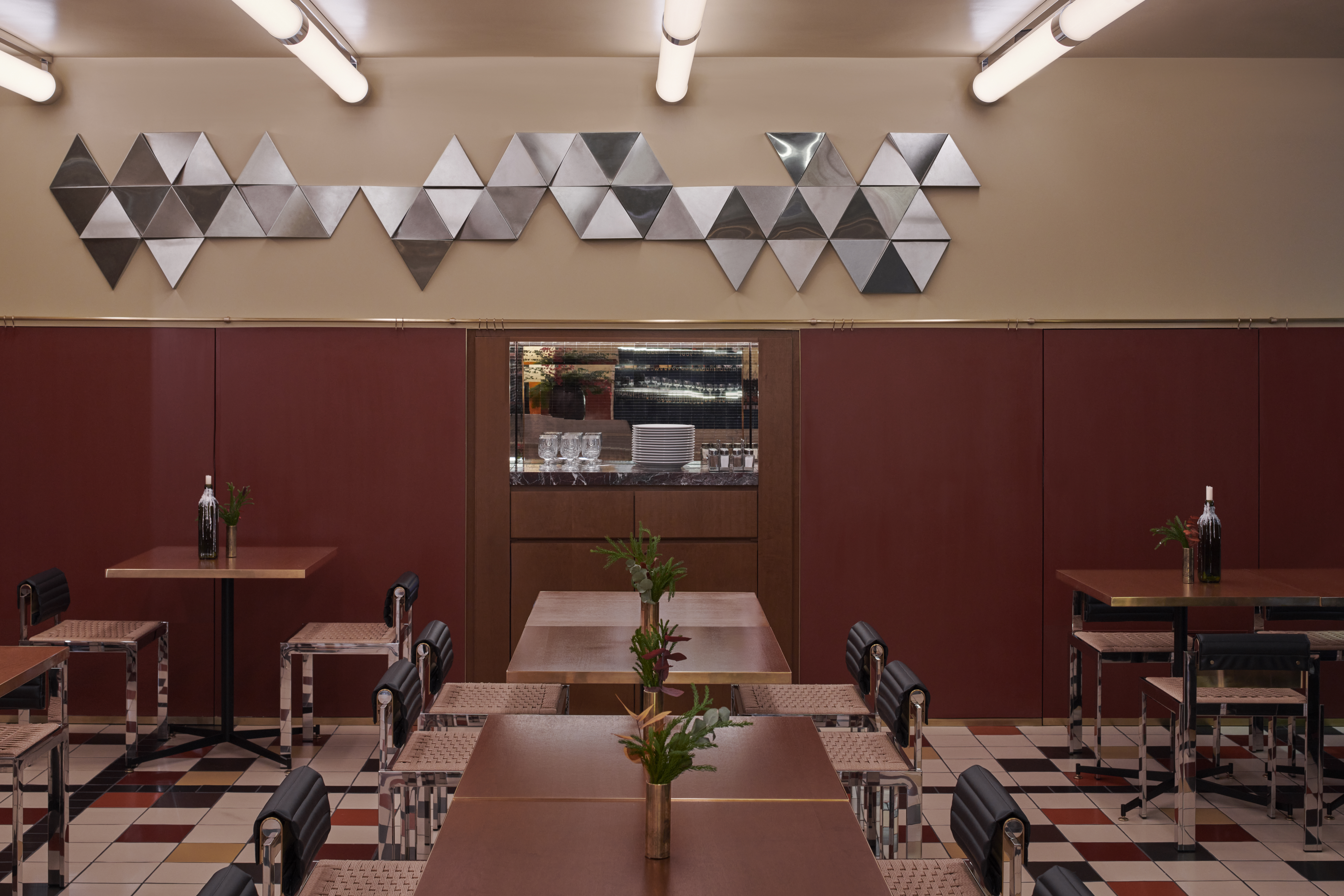
"The 1960s were a time when optimism was tangible, and design was playful yet rigorous. We worked around that idea." — Dimorestudio
"Brera has always represented the intersection between art, design, and a certain intellectual bohemia," Dimorestudio recounts. "For us, evoking Brera meant creating a dialogue between refinement and spontaneity."
Elegant but not pretentious, layered yet spontaneous, Trattoria del Ciumbia reflects that balance. The artworks, too, feed into that conversation: a nod to Milan's postwar artistic avant-garde, the dining room's multiple gallery walls see vintage pieces and contemporary works blend in in a love letter to "the radical gestures of the 1960s and the 1970s, the rationalist aesthetic, and the graphic experimentation of Memphis".
"Optimism Was Tangible"

More than just an eatery, the Dimorestudio-envisioned hangout packs the dynamism of a retro disco club in a sensory-pleasing destination for both the eye and the taste buds.
Any Italian who grew up in those decades, or was raised by a parent who did, knows they were synonymous with one thing, or better, three: unprecedented economic prosperity, growing social unrest, and an irreverent, thriving cultural scene. At Trattoria del Ciumbia, the shape-shifting and galvanizing essence of that epoch can be breathed in.
"The 1960s were a time when optimism was tangible, and design was playful yet rigorous," Dimorestudio explains, adding that the coffered ceilings of the restaurant, together with its bold contrasts and geometrical schemes, strive to loosely reinterpret their feel.
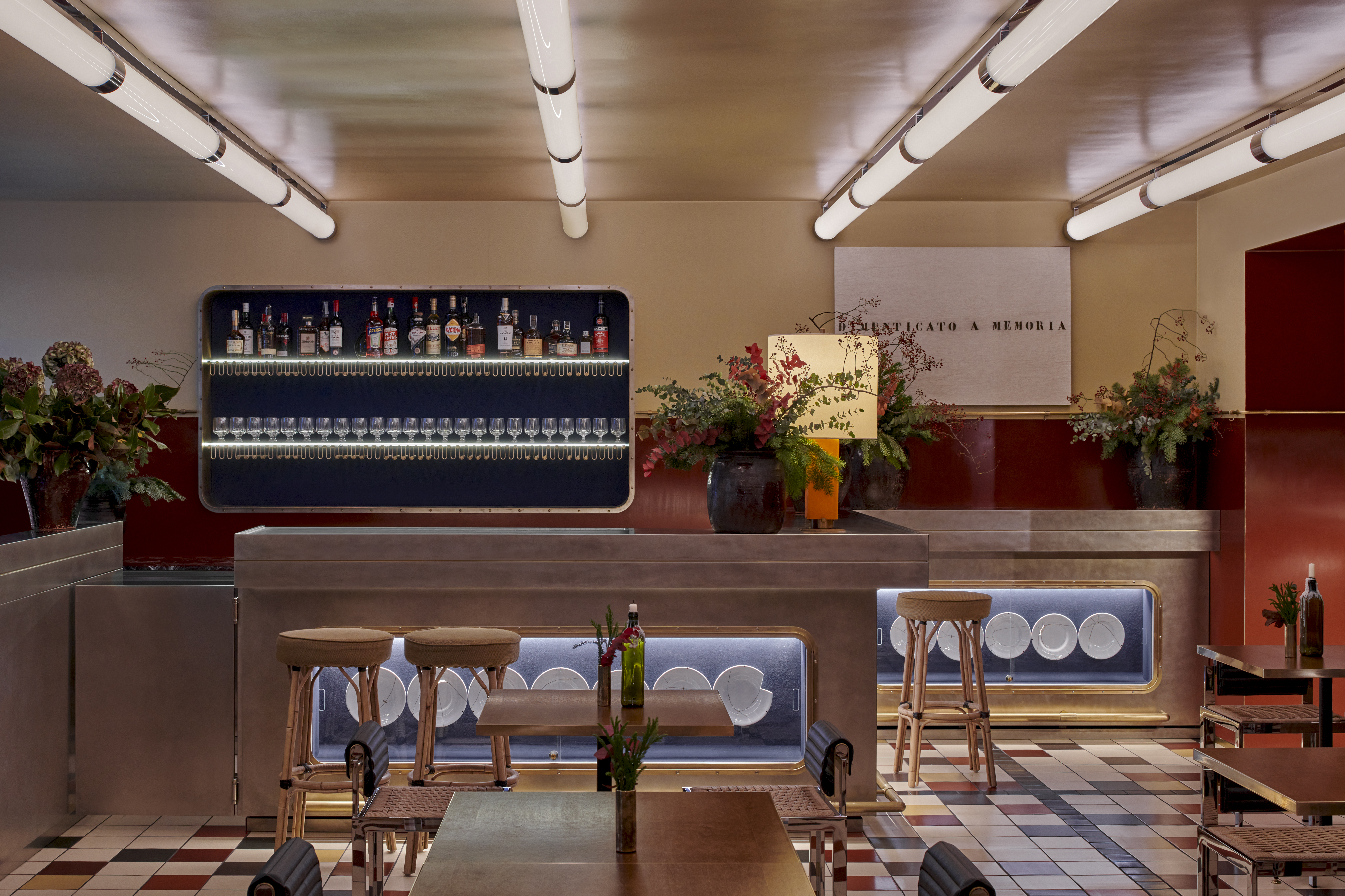
The cinematic ambiance of Trattoria del Ciumbia, crafted through contrasting surfaces that simultaneously hint at the new and the old.
The palette of ochre, argilla red, tobacco, and pale blue subtly echoes the sepia-tinted atmosphere of a dated family album. Brushed steel brings in movement and warmth, materials like glossy laminate, velvet, and glass give the space a tactile complexity, while the carefully outlined proportions and the spirited composition ensure it doesn't feel old, but current and in vogue.
Trattoria del Ciumbia doesn't just take you back to an inspiring Milanese past, but makes it better, less rigid, and more fun. Relying on sinuously fitted furnishings, plush fabrics, and eye-catching decor, it invites anyone who books a table to join in on an uncompromising celebration of Italian craft.
"Translating Flavor Into Form, and Warmth Into Space"
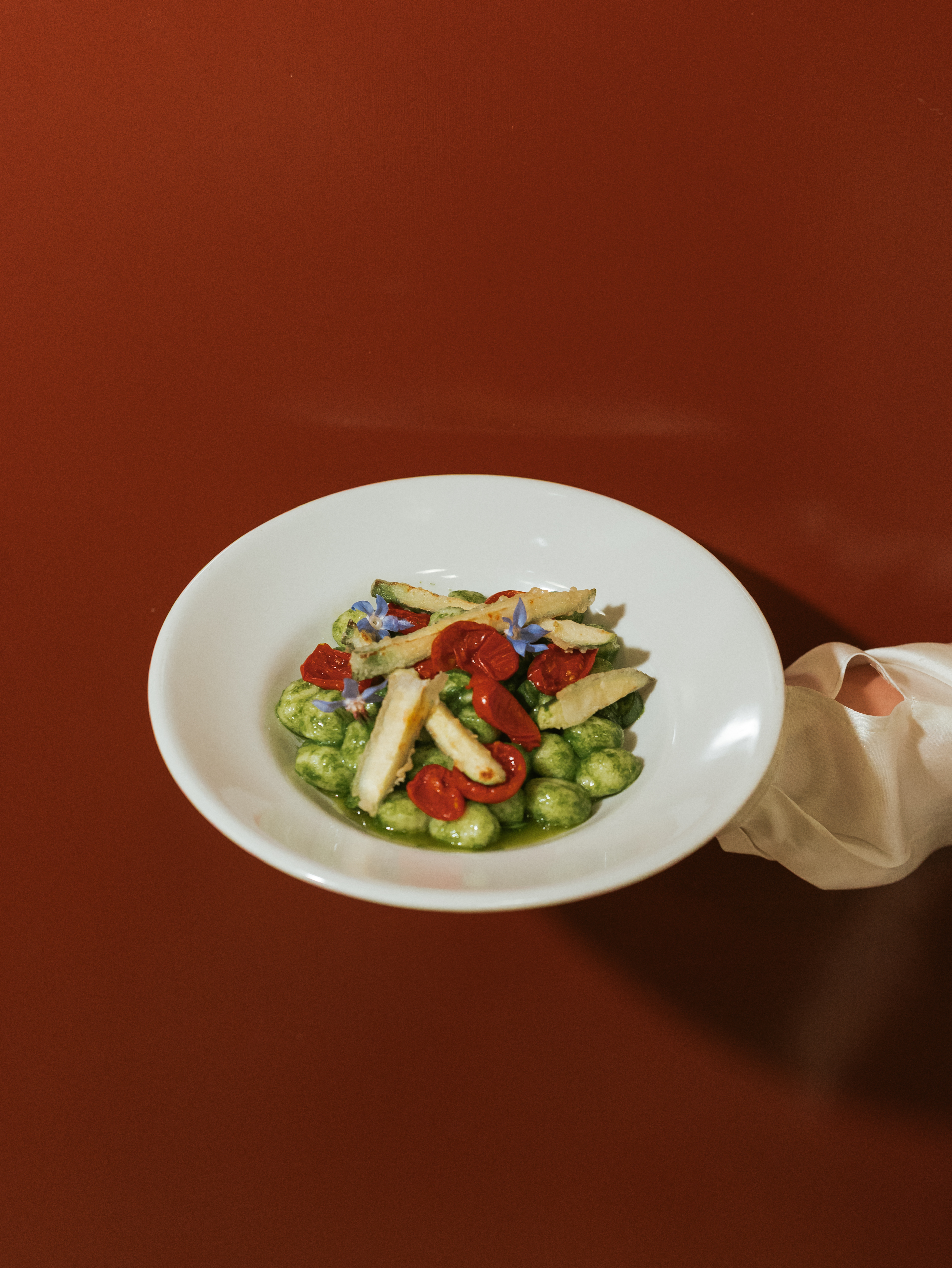
Paolo Rollini's vision for Trattoria del Ciumbia revitalizes Milan's culinary staples through bold presentations and ingredient-led menus that elevate traditional Italian flavors.
The same attention to detail can be found in the eatery's menu, whether experienced on a business lunch, of which, by the way, Milan is king, or à la carte. Known for its hearty, indulgent flavors, the cuisine of Lombardy and the Milan area, more specifically, centers around substantial dishes that have been keeping the stomachs of locals full, and their souls warm, for centuries now, even amidst the coldest of winters.
At Trattoria del Ciumbia, the region's famous, buttery risotti, cheese-topped polenta plates, meaty stews, and cotoletta alla Milanese find a new, beautiful form without betraying the simply delicious taste that distinguishes them all.
To say it in Dimorestudio's words, here, "everything stems from a shared sensibility: translating flavor into form, and warmth into space." A mission both the Milan-based designers and executive chef Rollini have nailed.
Stepping Into a Fantasy, Stepping Back in Time
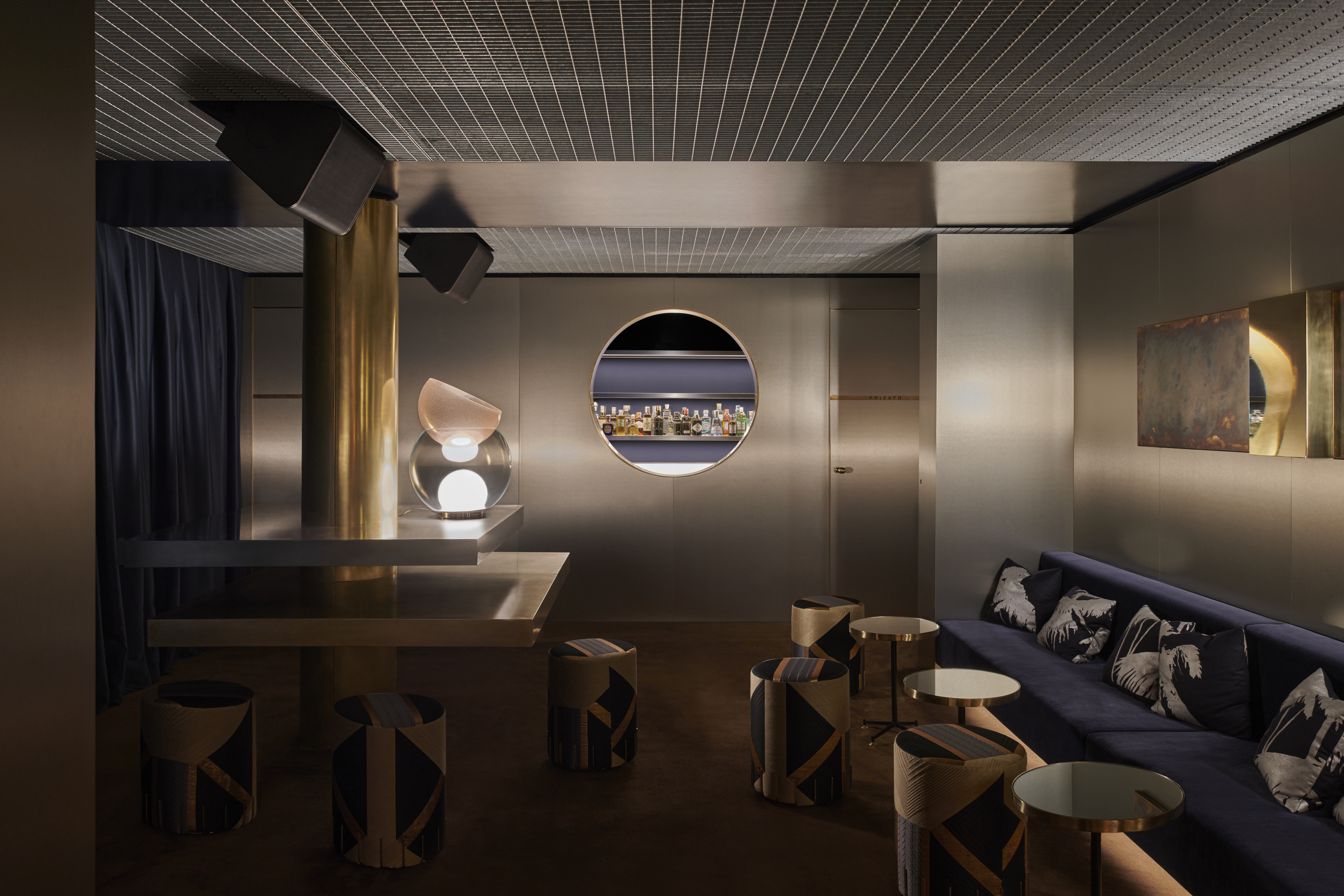
Balancing warmth and cold, the lower ground of Trattoria del Ciumbia infuses glamour into nautical-style decor.
In the 1960s, which coincided with the dawn of intergalactic expeditions, looking forward suddenly meant looking to the moon: a tendency best embodied by the whimsical, surreal environments and furniture that served as the protagonists of the so-called 'Space Age design' era — a trend that is currently enjoying a renaissance.
It is an interior moment that Trattoria del Ciumbia doesn't escape, but references widely, particularly in the numerous metallic surfaces that, present throughout the space, "introduce a sense of precision, almost like punctuation within a sentence," Moran and Salci explain.
Contrasting with the warmth of the eatery's palette, these brushed steel and chrome details give off "light reflections, evoking that decade's fascination with the future," they say. "Chrome today feels timeless again because it bridges the human and the industrial, bringing clarity and cadence into otherwise emotional spaces."
Light also contributes to imbuing the trattoria with a sense of play. "The back-lit fixtures bring a diffused, cinematic flow that softens the architecture. Neon elements inject energy and a slightly surreal edge, while the sculptural sconces create intimacy and mystery," Dimorestudio explains, adding that they "wanted guests to feel as if they were part of a film — a world both familiar and imagined."
An Ode to a Multifaceted Milan
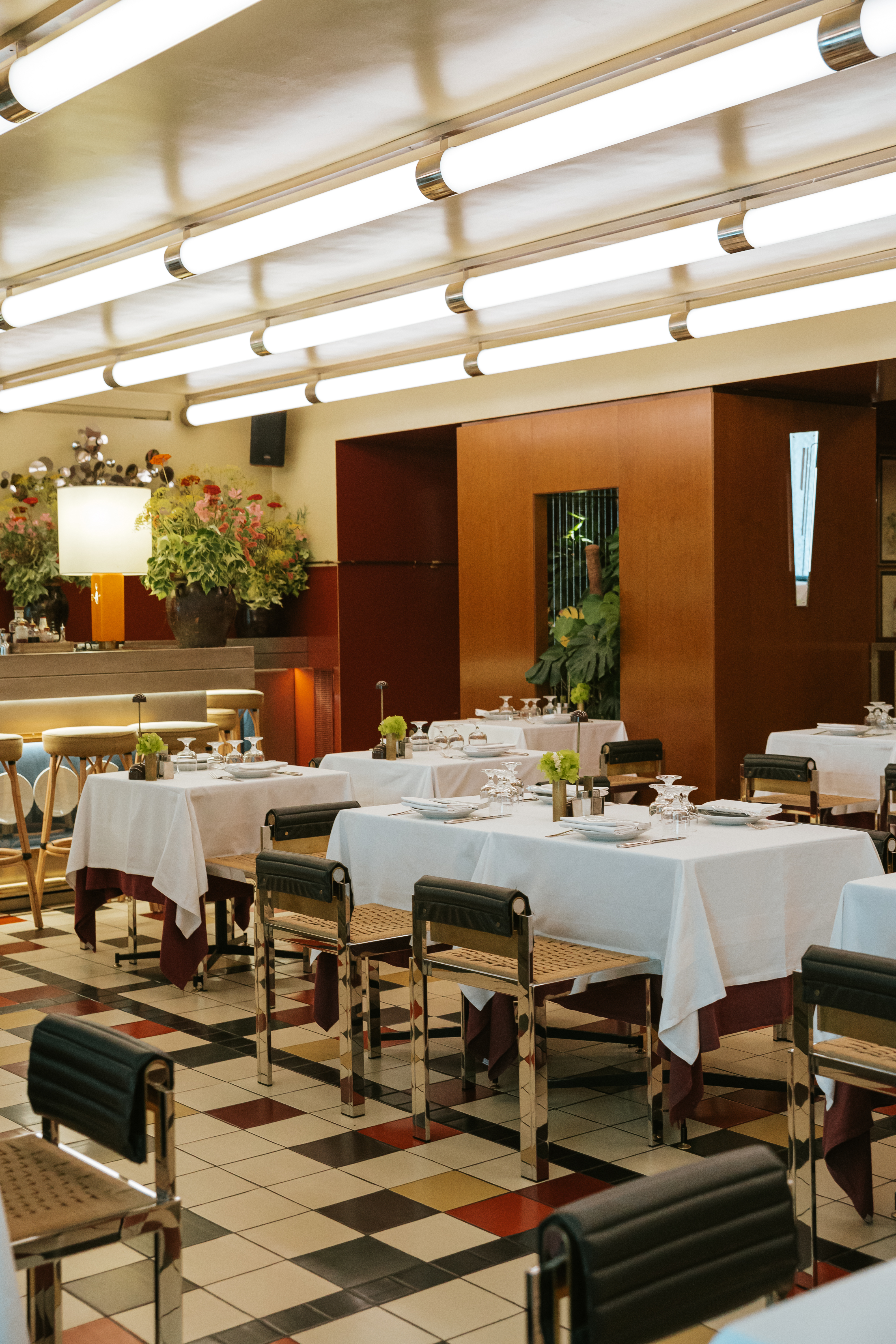
There is a patina to Trattoria del Ciumbia that immerses diners into a Milanese dream.
As people descend into Trattoria del Ciumbia's iconic Disco Club, they "transition from dining to dreaming". The vision for this space was to exude the atmosphere of a private members' club from another time: "smoky, sensual, a bit ironic," Moran and Salci explain. "The night blue walls, mirrored surfaces, and brass details create a cocoon-like environment," they add, while porthole windows give the illusion of being in a boat, a submarine, or — perhaps even better given the environment's lavishness — a yacht.
Like the rest of the eatery, the Disco Club, too, is deeply theatrical and "slightly decadent"; a wink at Italian filmmakers Gillo Pontecorvo's and Dario Argento's films, "where drama and allure blend in," Dimorestudio reveals.
If there is an element that best conveys the project's identity, though, it's the densely geometrical, checkered floor. "It represents Milan's multifaceted nature: pragmatic yet refined, rational but emotional," the designers suggest. A reflection on how the city's legacy of artistry and precision weaves itself into the contemporary, Trattoria del Ciumbia makes the lyrics from Giovanni D'Anzi and Alfredo Bracchi's popular 1939 Milanese song ring true even today:
Lassa pur che 'l mond el disa ("let the world say it") /
ma Milan l'è on gran Milan ("but Milan is a great Milan")
Book your table at Trattoria del Ciumbia.
Obsessed with the retro-fueled look of Trattoria del Ciumbia and want to know more about how more and more eateries are advocating for a Space Age design return? Dive into our recently published Space Odyssey restaurant trend long read to get a sense of it all.
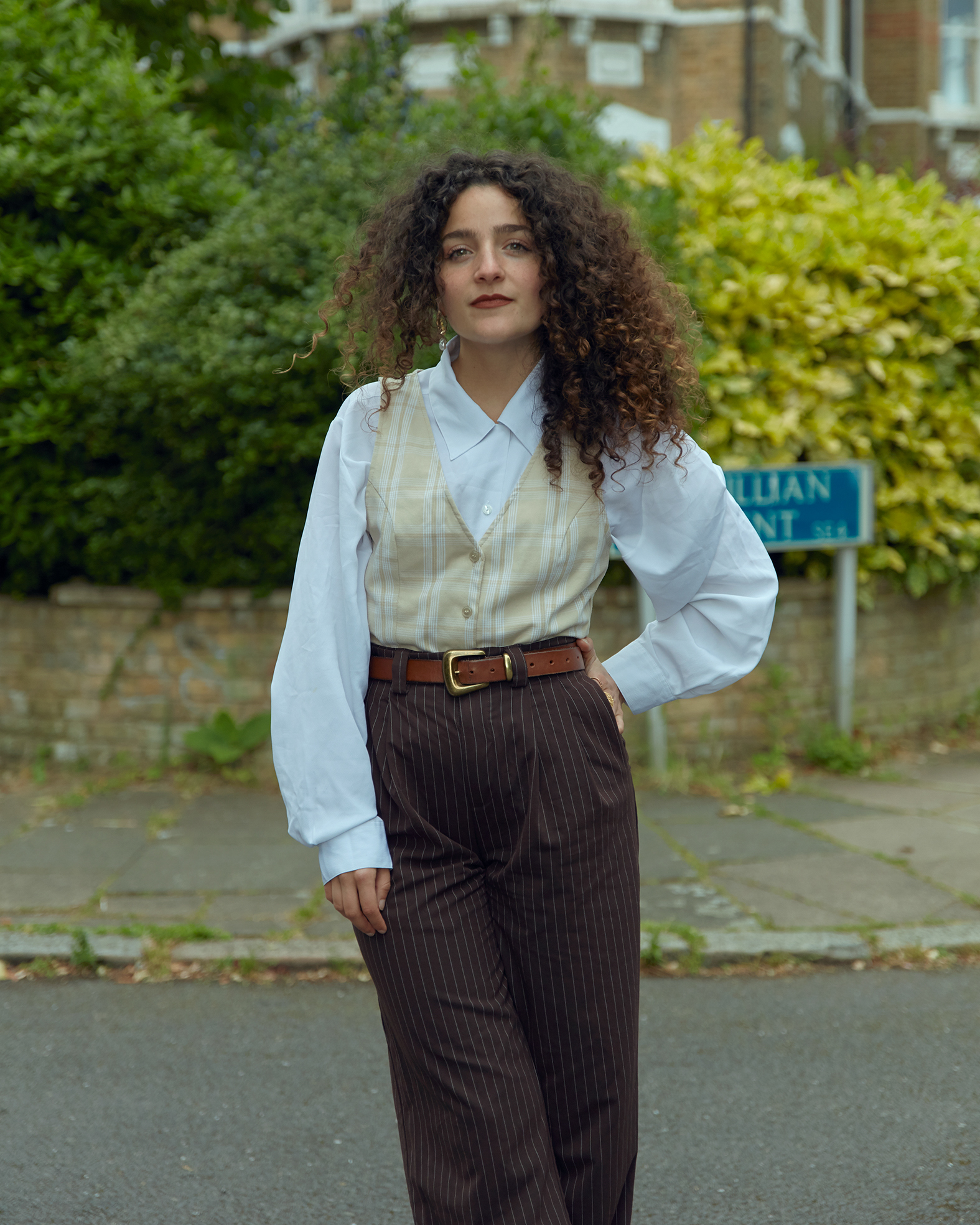
Gilda Bruno is Livingetc's Lifestyle Editor. Before joining the team, she worked as an Editorial Assistant on the print edition of AnOther Magazine and as a freelance Sub-Editor on the Life & Arts desk of the Financial Times. Between 2020 and today, Gilda's arts and culture writing has appeared in a number of books and publications including Apartamento’s Liguria: Recipes & Wanderings Along the Italian Riviera, Sam Wright’s debut monograph The City of the Sun, The British Journal of Photography, DAZED, Document Journal, Elephant, The Face, Family Style, Foam, Il Giornale dell’Arte, HUCK, Hunger, i-D, PAPER, Re-Edition, VICE, Vogue Italia, and WePresent.